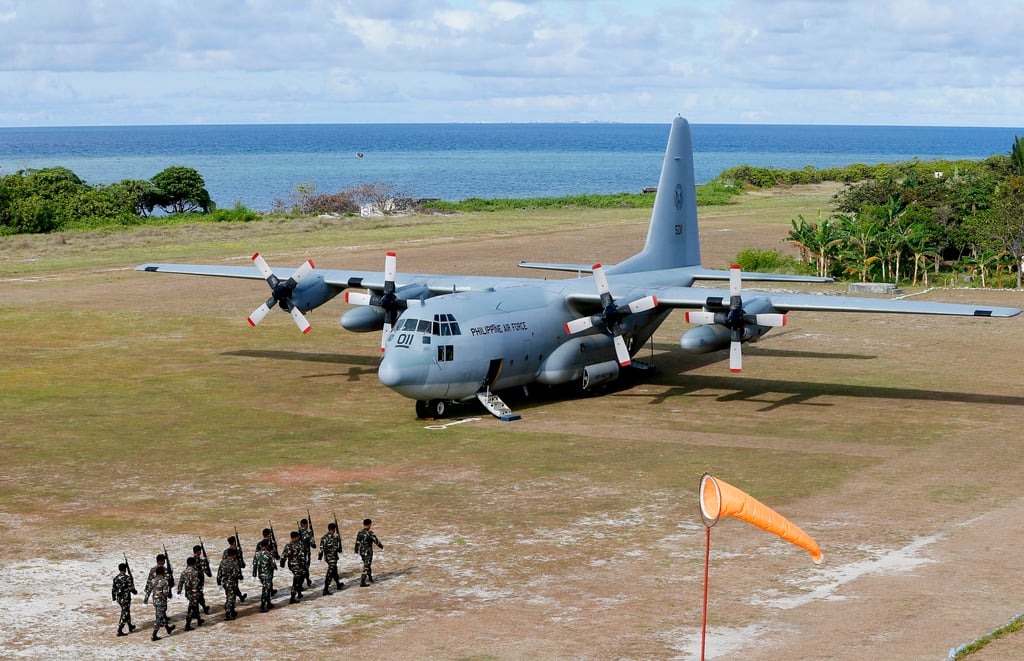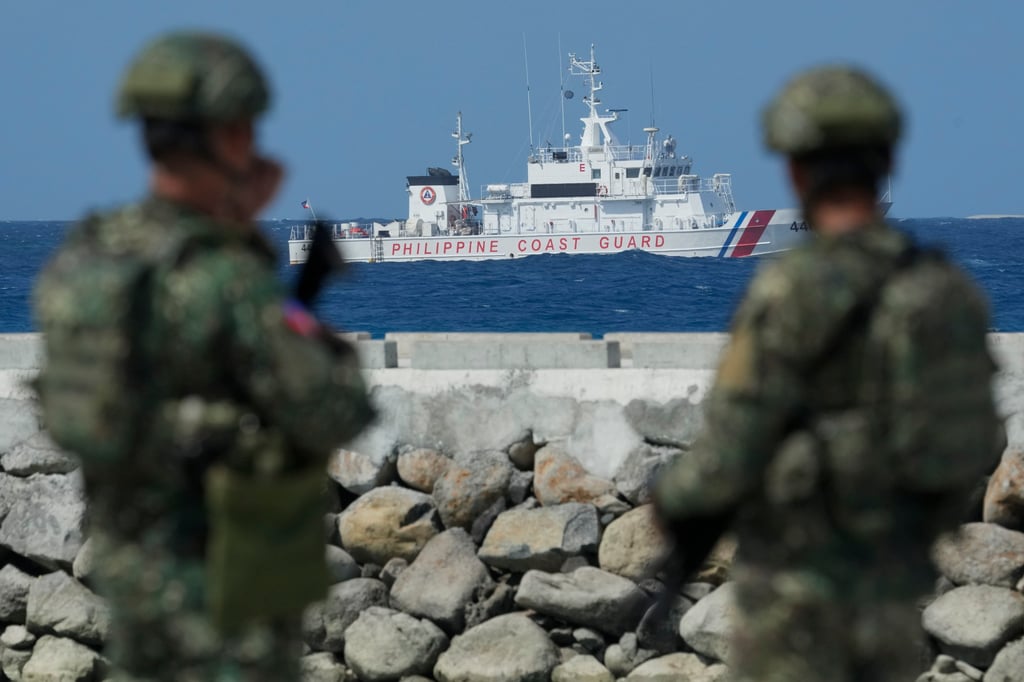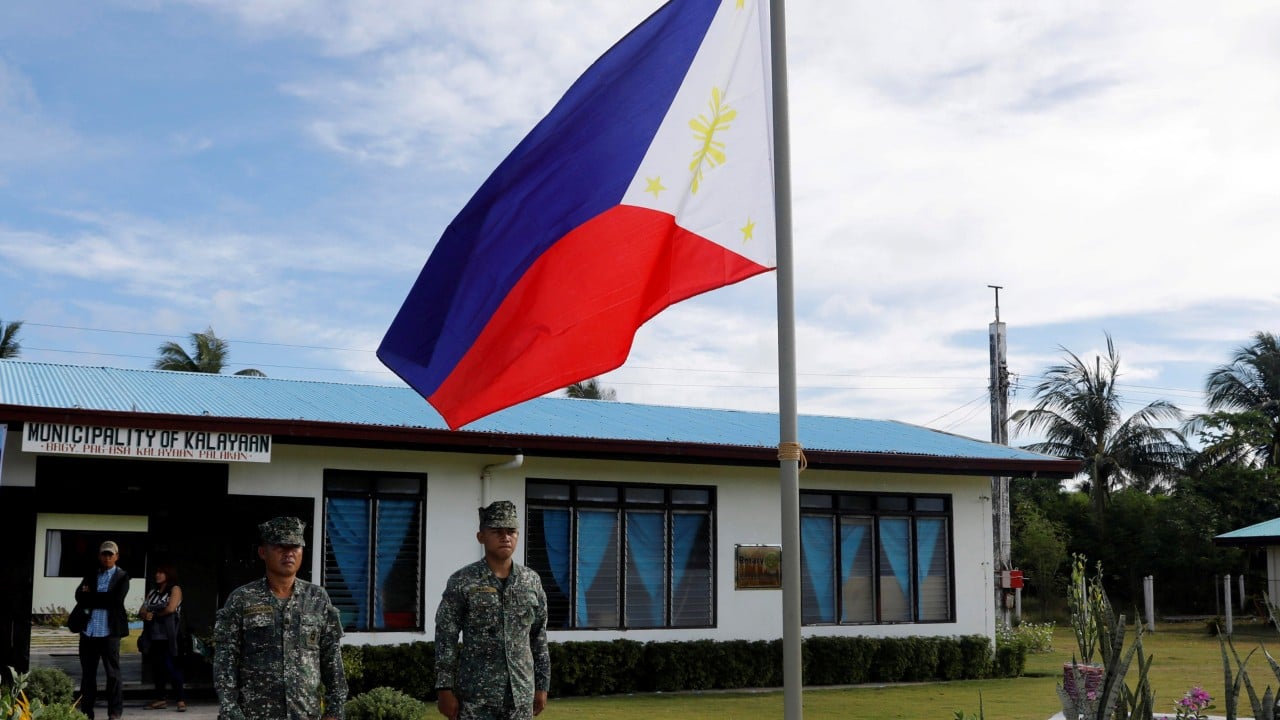Thitu Island, a little-known outpost in the contested South China Sea which analysts say is “critical” to the Philippines’ maritime security, could become a potential flashpoint after Beijing criticised Manila’s efforts to upgrade its military presence there.
China’s state-owned Global Times newspaper last week accused the Philippines of causing possible “provocations” on Thitu by expanding its military infrastructure to “potentially invite warships and warplanes from countries outside the region such as the US and Japan, sabotaging peace and stability in the South China Sea in the process”.
Thitu is the largest land mass in the Philippine-claimed Kalayaan Island Group within the Spratly Islands, located about 285 nautical miles (528km) from the western island province of Palawan. Mainland China, Vietnam and Taiwan also lay claim to the area.
China’s accusations about Thitu, known as Pag-asa Island in the Philippines, come amid a recent series of clashes between Manila and Beijing at nearby Sabina Shoal and Second Thomas Shoal, with both sides blaming the other for the incidents.
The Philippines established a coastguard monitoring base equipped with radar, ship-tracking, and other monitoring equipment on Thitu in December. The island also features military barracks and an unpaved airstrip.

Defence analyst Santiago Castillo told This Week in Asia that the Philippines had plans to further improve the defence infrastructure on the island to increase maritime domain awareness and logistical capacity of its military forces.
“As to potentially inviting warplanes from the US and Japan, that is a matter of logistics and operational coordination,” said Castillo, who previously worked in the Philippine government’s security sector.
Now a consultant in the private sector, Castillo said it was unclear whether the current facilities on Thitu would be able to accommodate any warplanes landing on the airstrip there.
Thitu is home to nearly 400 civilians, many of whom are subsistence fishermen plying the West Philippine Sea, Manila’s term for the portions of the South China Sea within its exclusive economic zone.
In May, Philippine lawmakers flew to the island on a “historic visit” to inaugurate the construction of new barracks and launch of a rural health unit for the villagers.
“Our investment in infrastructure projects on Pag-asa Island and in Kalayaan is an investment in our security in the West Philippine Sea,” then-Senate president Juan Miguel Zubiri said at the time.
“It will show China and the rest of the world that we have a thriving community in Kalayaan and that we have a functioning military unit ready to complement our patrols in our territory and exclusive economic zone.”
In July, President Ferdinand Marcos Jnr identified the development of an airport on the island as one of the government’s priority projects and said the procurement of land for a runway extension was under way.
These initiatives showed Manila’s resolve to maintain its presence and assert its sovereignty in the disputed waters, analysts said.

Observers note that Thitu is at the “heart” of the Philippines’ maritime and territorial claims in the West Philippine Sea.
The island is vital to the Philippines’ shifting its defence paradigm from decades of internal security operations towards an external approach, according to Castillo.
“Pag-asa Island is at the western edge of our territory, and I could liken it to a guard post and picket fence that keeps watch on what our regional neighbours are doing and gatekeeps unwanted presences,” Castillo said.
“Our presence in locations such as Pag-asa Island is critical for our maritime security and defence forces to have better domain awareness and presence in such areas.”
Chester Cabalza, president of the International Development and Security Cooperation think tank, said the Philippines was the first to build civilian communities on the “disputed islands”, whereas China had engaged in expansive land reclamation efforts “to militarise the South China Sea”.
He added that Beijing cannot deprive Filipinos of their constitutional right of abode “since they have their legitimate communities in Pag-asa Island”.
On China’s claims that the Philippines had been carrying out “infringement activities and provocations in the South China Sea”, Castillo said it was the other way around.
“While Chinese media would like to paint the Philippines as troublemakers, the Filipino citizens who are at the forefront of all this have maintained their discipline and resolve without having to resort to clearly aggressive, perhaps rather borderline belligerent behaviour,” he said.

In May, Philippine officials and marine biologists expressed alarm at the widespread destruction of coral reefs uncovered on the island, with many of them severely degraded and found in unusually high piles, indicating man-made activity.
Philippine Coast Guard spokesman Jay Tarriela attributed the damage to Beijing and said it should be held responsible for the damage and other environmental impacts from its land reclamation activities near the island.
Cabalza said the existing communities on Thitu were the strongest testimonies that the island belonged to the Philippines, despite overlapping claims with other countries.
Filipinos on Thitu had long expressed their frustration at the presence of Chinese vessels around the island, with fishermen seeing a decline in their catch, Cabalza said, adding that the island’s residents should be safeguarded from foreign intrusion and invasion.
Cabalza warned that any takeover by Beijing of the island would be seen as an act of war and “deemed an invasion at all cost”.


